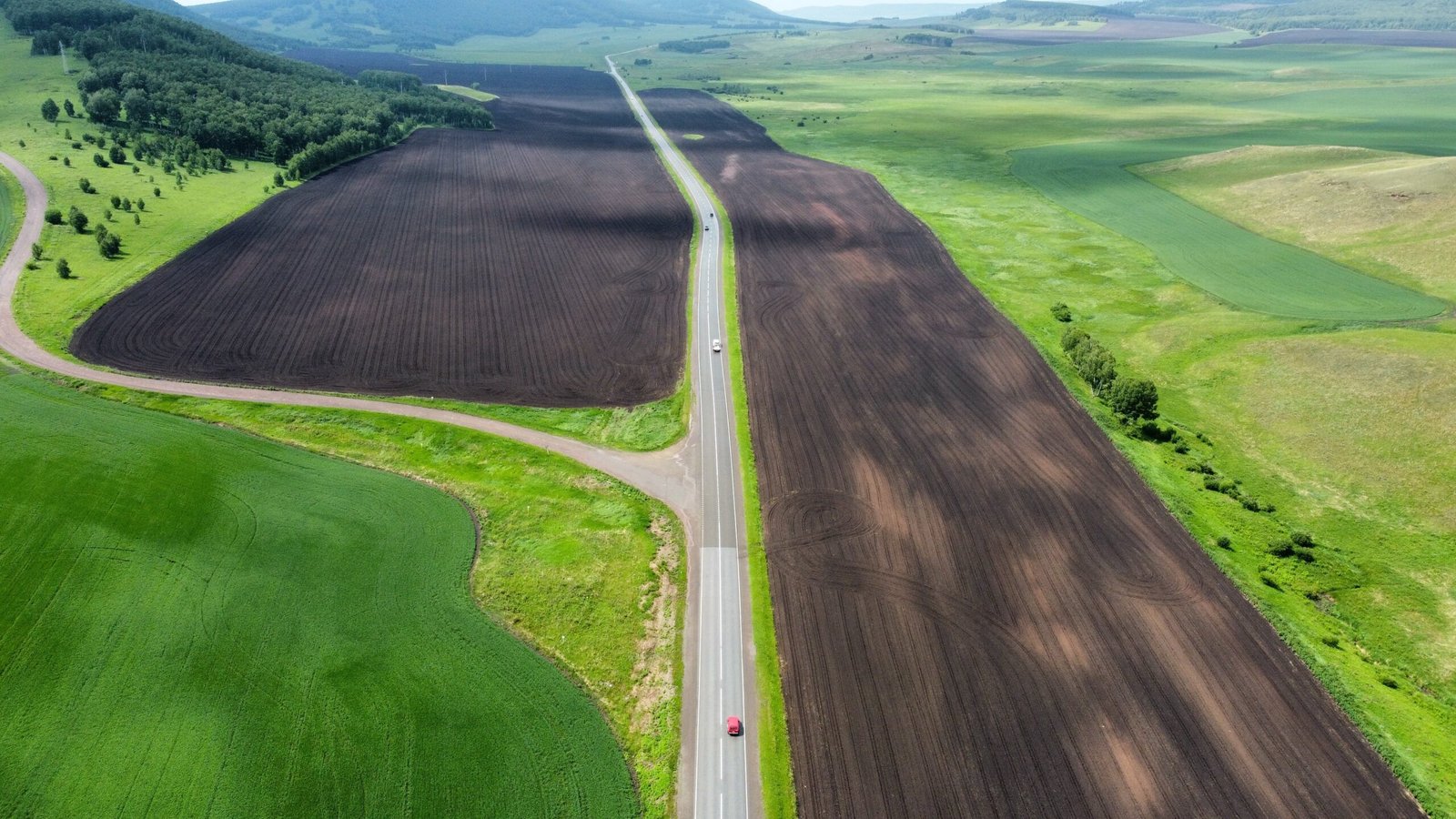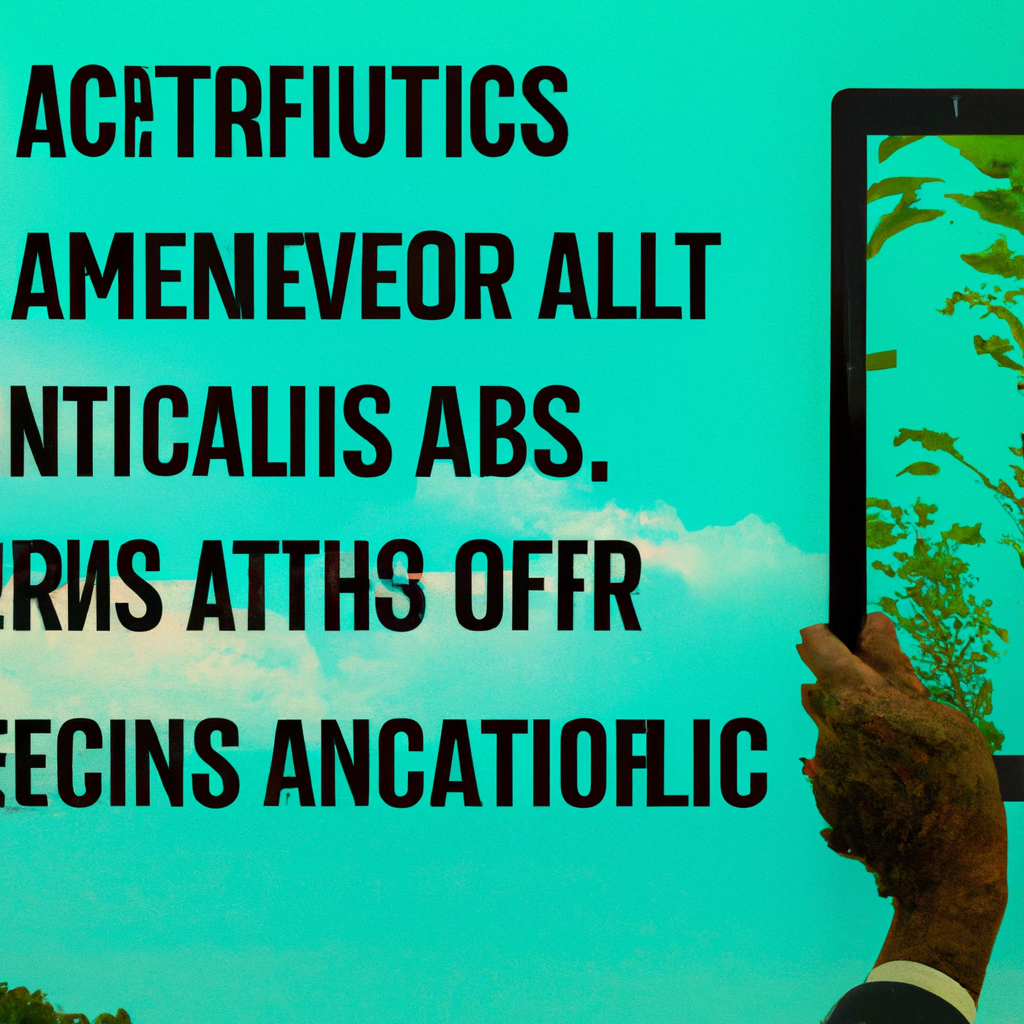In the realm of modern technology, can artificial intelligence (AI) find its place in the agricultural world? As farmers and researchers continually seek innovative solutions to enhance productivity and address various challenges, curiosity lingers around the potential applications of AI in this age-old industry. By harnessing the power of data analysis and automated processes, AI holds the promise of revolutionizing farming practices, enabling more efficient crop management, and ultimately contributing to a greener and more sustainable future. So, let’s explore the possibilities and see how AI can transform the face of agriculture.

This image is property of images.pexels.com.
Overview of AI in Agriculture
AI, or Artificial Intelligence, is revolutionizing various industries, including agriculture. In simple terms, AI refers to computer systems or machines that simulate intelligent behavior and are capable of learning from experience and making decisions in a similar way to humans. In the context of agriculture, AI technology is being used to enhance efficiency, productivity, and sustainability in farming practices. It is transforming traditional agriculture into a more advanced and data-driven field, optimized for better decision-making and resource management.
Importance of Agriculture
Agriculture is a vital industry that serves as the backbone of our society. It plays a crucial role in providing us with food, feed, fiber, and fuel. As the global population continues to grow at an unprecedented rate, the demand for agricultural products is increasing exponentially. With limited arable land and resources, it becomes essential to find innovative solutions to maximize yield, reduce waste, and protect the environment. The integration of AI in agriculture holds immense significance as it offers efficient and sustainable methods to meet the growing demands of the ever-expanding population.
Use of AI in Various Industries
AI is not limited to a single industry; it has found its applications in various sectors, ranging from healthcare to finance. In agriculture, AI is revolutionizing the way farmers and agricultural scientists carry out their work. By harnessing the power of AI technology, farmers can optimize their operations, minimize costs, and increase overall productivity. Furthermore, AI is also transforming the field of plant and animal breeding, enabling the development of new and improved crop varieties and livestock breeds. The integration of AI is not only enhancing productivity but also driving innovation in sustainable farming practices.
Benefits of AI in Agriculture
Increased Efficiency and Productivity
One of the primary benefits of AI in agriculture is the increased efficiency and productivity it offers. AI-powered systems and algorithms can analyze vast amounts of data, including weather patterns, soil conditions, and crop characteristics, to optimize farming practices. This enables farmers to make informed decisions regarding planting, irrigation, and harvesting, resulting in higher yields and reduced resource wastage. By automating repetitive tasks and streamlining operations, AI frees up valuable time for farmers and allows them to focus on more critical aspects of their work.
Automation of Agricultural Tasks
AI technology is revolutionizing the farming industry by automating a wide range of tasks. From planting seeds to harvesting crops, AI-driven machines and robots can perform these tasks with precision and efficiency. For instance, autonomous tractors equipped with AI systems can analyze data in real-time and adjust their operations accordingly, ensuring optimal planting and cultivation practices. The automation of tasks not only saves time and labor but also minimizes human errors, resulting in improved productivity and reduced costs.
Improvement in Decision Making
The integration of AI provides farmers with valuable insights and analytics, helping them make well-informed decisions. By analyzing large datasets from sensors, satellites, and drones, AI algorithms can identify patterns and trends that humans might miss. This enables farmers to monitor crop health, predict disease outbreaks, and detect water stress in real-time. With enhanced decision-making capabilities, farmers can take proactive measures to mitigate risks, optimize crop management, and maximize yield.
Optimized Resource Management
AI technology plays a pivotal role in optimizing resource management in agriculture. By analyzing data related to soil moisture levels, weather forecasts, and crop growth stages, AI-powered systems can provide recommendations for precise irrigation scheduling, minimizing water wastage. Similarly, AI algorithms can also optimize fertilizer usage by accounting for soil nutrient levels and crop requirements. By optimizing resource management, AI helps farmers reduce input costs, conserve resources, and promote environmental sustainability.

This image is property of images.pexels.com.
Applications of AI in Agriculture
Precision Farming
Precision farming, also known as precision agriculture, is an application of AI that involves the use of advanced technologies to increase the efficiency and accuracy of agricultural practices. It combines various tools such as GPS, sensors, drones, and AI algorithms to collect data about the farm’s environment and crop conditions. This data is then analyzed to generate insights and recommendations for precise crop management. Precision farming enables farmers to apply the right amount of inputs, such as water, fertilizers, and pesticides, in the right place and at the right time, resulting in optimized yield, minimized waste, and reduced environmental impact.
Crop Health Monitoring
AI-based systems are being used in crop health monitoring to detect diseases, pests, and nutrient deficiencies at an early stage. By analyzing data collected from sensors and drones, AI algorithms can identify abnormalities in plant growth patterns and alert farmers about potential risks. This enables farmers to take immediate action, such as applying targeted treatments or adjusting agricultural practices, to prevent further damage and ensure healthy crop growth. Crop health monitoring through AI not only maximizes yield but also minimizes the need for excessive pesticide usage, promoting sustainable farming practices.
Weed and Pest Control
Weeds and pests pose significant threats to crop productivity and profitability. Traditional methods of weed and pest control often involve the excessive use of herbicides and pesticides, leading to environmental contamination and resistance development. AI-powered systems offer innovative and sustainable solutions to tackle these challenges. Through the analysis of visual imagery and sensor data, AI algorithms can identify and differentiate between crops, weeds, and pests. This enables farmers to apply targeted treatments and minimize the use of harmful chemicals while effectively controlling weeds and pests.
Weather Prediction and Climate Monitoring
AI technology is revolutionizing weather prediction and climate monitoring in agriculture. By analyzing historical weather data, satellite imagery, and sensor data, AI algorithms can generate accurate weather forecasts and provide real-time updates. This information is invaluable for farmers as it allows them to plan their operations accordingly, such as scheduling irrigation, protection against extreme weather events, and harvesting. Additionally, AI algorithms can also help monitor climate change patterns and their potential impacts on agricultural practices, enabling farmers to adapt and mitigate risks effectively.
Livestock Monitoring
AI is not limited to crop farming; it also has incredible potential in livestock management. Sensors and wearable devices equipped with AI technology can monitor the health and behavior of livestock animals. By collecting and analyzing data related to vital signs, feeding patterns, and movement, AI algorithms can provide early warnings for potential health issues and detect anomalies within the herd. This enables farmers to take timely action and prevent the spread of diseases, optimize feed management, and ensure the overall well-being of their livestock.
Agricultural Drones and Robotics
Agricultural drones and robotic systems are becoming increasingly popular in the field of agriculture, thanks to the integration of AI technology. Drones equipped with AI algorithms can survey vast areas of farmland, collecting high-resolution imagery and sensor data. This data can be analyzed to generate detailed maps, identify problem areas, and make informed decisions regarding soil management, irrigation, and pest control. Similarly, AI-powered robots can perform labor-intensive tasks, such as planting, weeding, and harvesting, with precision and efficiency. The use of agricultural drones and robotics not only saves time and labor but also enhances overall productivity and reduces costs.
Challenges and Limitations of AI in Agriculture
High Initial Investment
The adoption of AI technology in agriculture requires a significant initial investment. The cost of AI infrastructure, sensors, drones, and other hardware can be prohibitive for small-scale farmers, limiting their access to these advanced tools. Additionally, the implementation of AI systems often requires specialized knowledge and technical skills, which may not be readily available in rural areas. Bridging the financial and knowledge gap is crucial to ensure the inclusive and widespread use of AI in agriculture.
Lack of Data and Infrastructure
AI heavily relies on data for training and decision-making. In many developing regions, access to reliable and comprehensive data is limited, hindering the effective use of AI in agriculture. Improving data collection infrastructure, such as weather stations, soil sensors, and satellite imagery, is essential to ensure the availability of accurate and up-to-date information. Additionally, the lack of internet connectivity and technological infrastructure in rural areas poses significant challenges in implementing AI-driven solutions in agriculture.
Ethical Concerns
The integration of AI in agriculture raises ethical concerns, particularly related to data privacy and the potential displacement of human labor. AI systems collect and analyze vast amounts of personal and sensitive data, including farmer’s information and farm practices. Ensuring the privacy and security of this data is crucial to build trust between farmers and AI systems. Concerns also arise regarding the potential impact of AI on the employment of agricultural workers. While AI automation can streamline operations and improve efficiency, it may lead to job displacement and socioeconomic challenges in rural communities.
Dependency on External Factors
AI-powered systems in agriculture heavily rely on external factors such as weather conditions, access to resources, and market dynamics. Unpredictable weather patterns, water scarcity, and fluctuations in market demand can significantly impact the effectiveness and performance of AI algorithms. Farmers need to consider these external factors and have alternate plans to ensure the resilience and adaptability of AI-driven farming practices.

This image is property of images.pexels.com.
Case Studies
John Deere’s AI-driven Precision Agriculture
John Deere, a renowned agricultural equipment manufacturer, has embraced AI-driven precision agriculture to optimize farming practices. Their AI-powered systems integrate data from sensors, drones, and satellites to provide farmers with real-time insights and recommendations. By combining data on soil conditions, weather forecasts, and crop growth, John Deere’s AI algorithms enable farmers to make data-driven decisions regarding planting, irrigation, and fertilization. This precision agriculture approach has resulted in increased yields, reduced costs, and improved sustainability for farmers.
Blue River Technology’s Weed Detection System
Blue River Technology, a pioneer in agricultural robotics, has developed an AI-driven weed detection system that revolutionizes weed control in farming. Their system uses computer vision and machine learning to differentiate between crops and weeds, enabling targeted herbicide application. By precisely targeting weeds, farmers can minimize the use of herbicides and reduce the impact on the environment. Blue River Technology’s weed detection system has demonstrated significant improvements in weed control efficiency and has the potential to transform weed management practices in agriculture worldwide.
AI-powered Crop Health Monitoring
Another remarkable application of AI in agriculture is AI-powered crop health monitoring. Companies like Prospera and Taranis are leveraging AI algorithms to analyze multispectral imagery and sensor data to monitor crop health. By detecting early signs of diseases, nutrient deficiencies, and stress, these AI systems enable farmers to take timely actions and optimize crop management. AI-powered crop health monitoring not only improves productivity but also promotes sustainable farming practices by reducing excessive use of fertilizers and pesticides.
Future Trends and Possibilities
AI and Internet of Things (IoT)
The integration of AI with the Internet of Things (IoT) holds immense potential for the agriculture industry. By connecting various devices and sensors, AI-powered IoT systems can collect and analyze real-time data, enabling precise and dynamic decision-making. For example, by combining data from soil moisture sensors, weather stations, and crop growth sensors, AI can automatically adjust irrigation schedules to optimize water usage. The AI-IoT convergence has the potential to revolutionize how farmers manage their resources and make informed decisions in real-time.
Machine Learning and Predictive Analytics
Machine learning, a subset of AI, is enabling predictive analytics in agriculture. By analyzing historical data and identifying patterns, machine learning algorithms can predict future events and outcomes. This has significant implications for crop yield estimation, disease outbreaks, and market demand forecasting. Machine learning algorithms can help farmers anticipate potential risks, make informed planting decisions, and optimize production to meet market demands. The integration of machine learning and predictive analytics can lead to increased efficiency and profitability in agriculture.
Blockchain and Traceability
Blockchain technology, which provides a tamper-proof and transparent ledger, can enhance traceability and transparency in the agricultural supply chain. By leveraging AI algorithms, blockchain systems can track and verify the origin, quality, and safety of agricultural products. This ensures trust and strengthens consumer confidence in the food they consume. Additionally, blockchain-enabled traceability systems can also help farmers access fair markets, prevent food fraud, and promote sustainability by rewarding sustainable farming practices. The combination of AI and blockchain has the potential to revolutionize the agricultural industry’s transparency and sustainability.

Conclusion
The integration of AI in agriculture presents significant opportunities for farmers to increase efficiency, productivity, and sustainability. Through precision farming, crop health monitoring, and automated tasks, AI technology is transforming traditional agricultural practices. However, challenges such as high initial investment, lack of data and infrastructure, and ethical concerns need to be addressed to ensure the widespread adoption and inclusivity of AI in agriculture. With ongoing advancements and research, the future of AI in agriculture looks promising, with trends like AI-IoT convergence, machine learning, and blockchain leading the way. Harnessing the potential of AI will enable farmers to meet the growing demands of a booming population while promoting sustainable and environmentally friendly farming practices.
